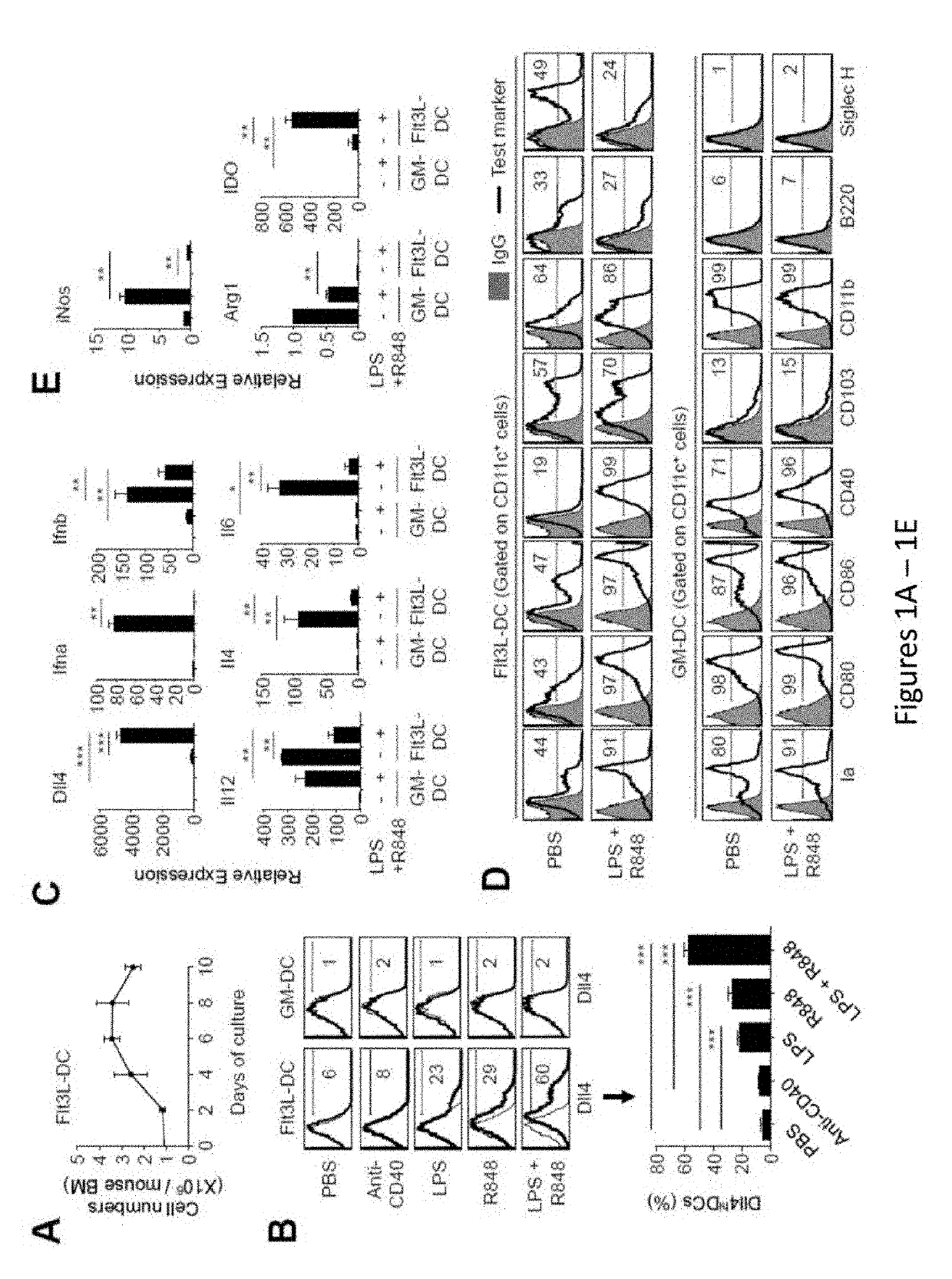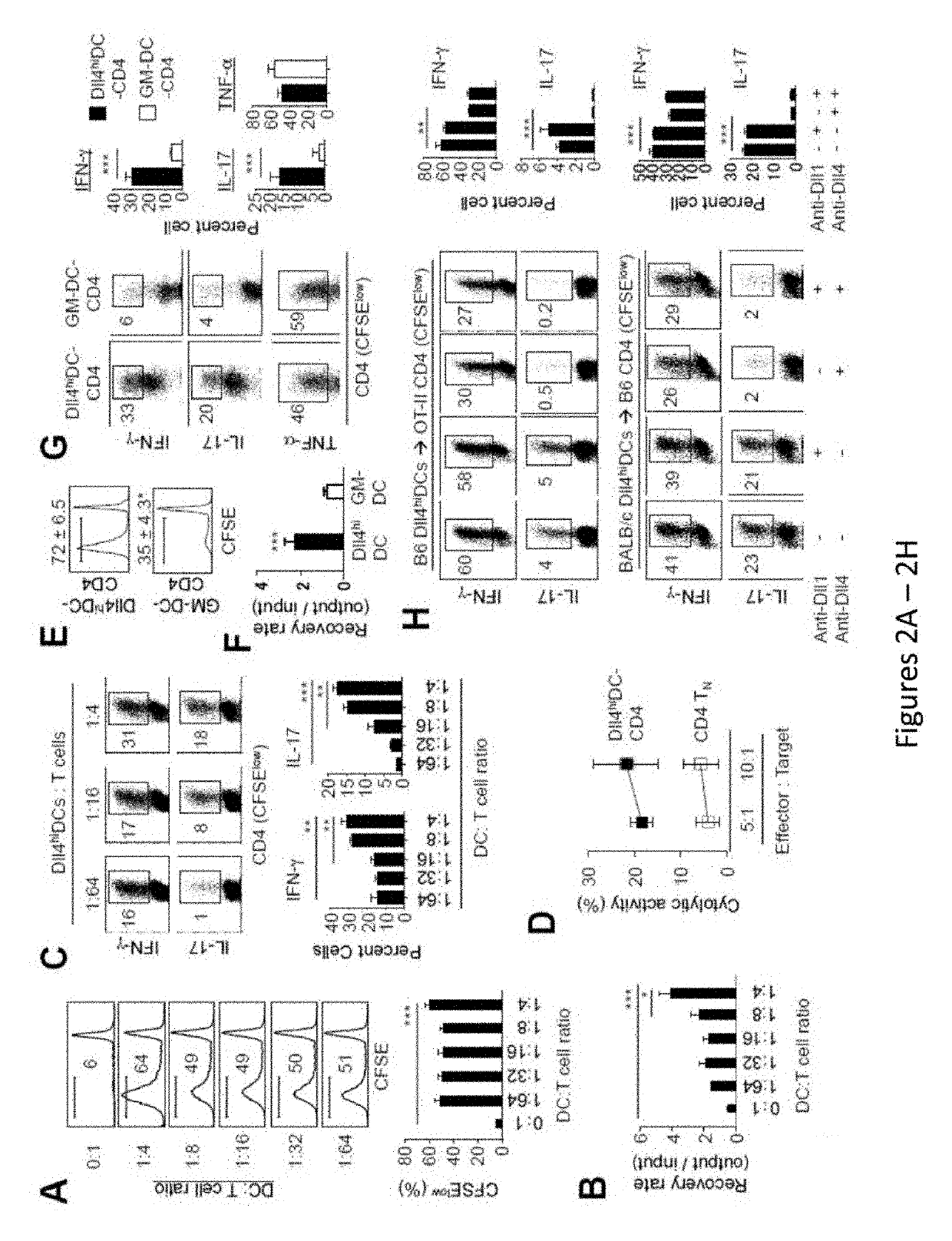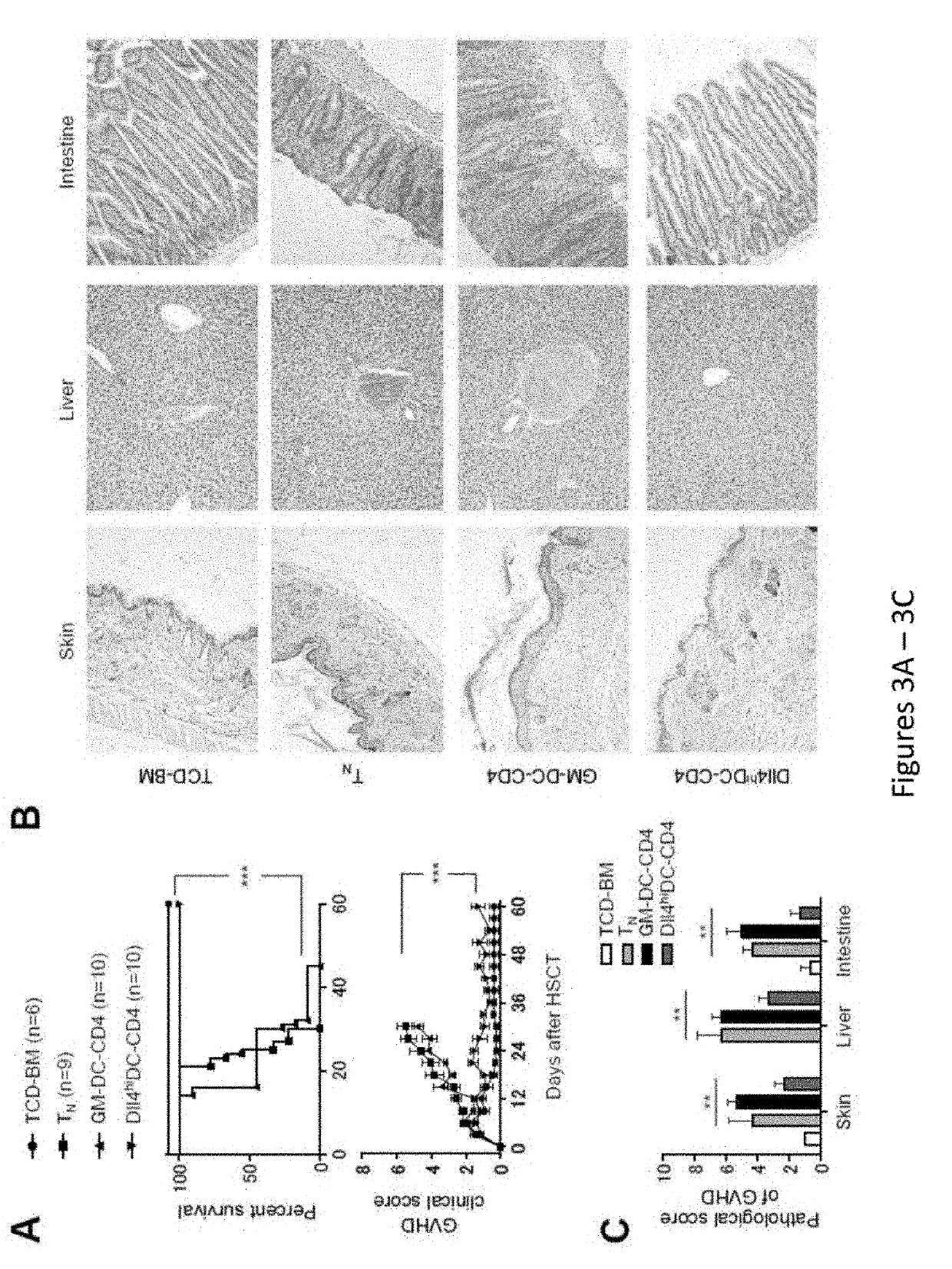DLL4-expressing cells and vaccine using the same
a technology of dll4 and cells, applied in the field of dll4expressing cells and vaccines using the same, can solve the problem that dcs do not naturally express dll4
- Summary
- Abstract
- Description
- Claims
- Application Information
AI Technical Summary
Benefits of technology
Problems solved by technology
Method used
Image
Examples
example 1
Programming of Donor T Cells Using Allogeneic Delta-Like Ligand 4-Positive Dendritic Cells to Reduce Graft-Versus-Host Disease in Mice
[0235]Allogeneic hematopoietic stem cell transplantation (HSCT) is an effective cellular therapy for hematological malignancies. A primary barrier that limits its success is acute graft-versus host disease (GVHD). (Choi et al., Nat Rev Clin Oncol, 2014, 11:536-46; Choi et al., Blood, 2010, 116:129-139; Bleakley and Riddell, Immunol Cell Biol, 2011, 89:396-407; Blazar et al., Nat Rev Immunol, 2012, 12:443-458; Shlomchik, Nat Rev Immunol, 2007, 7:340-352). GVHD is caused by donor T cells that recognize and react to histocompatibility differences between host and donor cells. GVHD is initiated by priming of donor T cells by host antigen-presenting cells and followed by robust proliferation and differentiation of alloreactive T cells that mediate tissue injury (Blazar et al., Nat Rev Immunol, 2012, 12:443-458; Shlomchik, Nat Rev Immunol, 2007, 7:340-352)....
example 2
DLL4-Engineered Antigen-Presenting Cells and Tumor Vaccine
[0273]To provide sufficient numbers of human DLL4 DCs for in vitro priming, lentivirus encoding human DLL4 was made and used to infect human monocyte-derived DCs (Mo-DC) and produce DLL4 Mo-DCs. The mRNA and protein sequence of human DLL4 are shown in FIG. 8.
Engineering Mo-DC Using Lentivirus-Encoding DLL4
[0274]To provide sufficient numbers of human DLL4 DCs for in vitro priming, lentivirus encoding human DLL4 (SEQ ID NO:1) was made and used to infect human monocyte-derived DCs (Mo-DC). Viral introduction of DLL4 into these DCs produced DLL4hi Mo-DCs, but did not alter their expression of HLD-DR and co-stimulatory molecules CD40 and CD86 (FIG. 9A). Interestingly, when added to allogeneic MLR cultures, these DLL4hi Mo-DCs induced 4-fold more CD4 TH1 cells than control Mo-DCs (FIG. 9B). Blocking DLL4 by its specific Ab markedly reduced the effect of these DLL4hi Mo-DCs on promoting TH1 cell response (FIG. 9B). These results cle...
example 3
DLL4 DC-Based Vaccination Results in the Induction and Expansion of Antigen-Specific CD4 T Cells and CD4 T Cells Producing High Levels of IFN-γ
[0277]FIG. 12 shows the effect of DLL4+ DC vaccination on the induction and expansion of antigen-specific CD4 T cells compared to that of GM-DC vaccination. In this experiment, murine DLL4+ DCs and GM-DCs were generated from bone marrow, pulsed with OVA for 3 hours, and adoptively transferred into sub-lethally irradiated B6 / SJL mice (CD45.1+) on day 0. OT-II specific CD4 T cells (CD45.2+) were transferred into these B6 / SJL mice after radiation but before DC vaccination. DC vaccination was repeated on day+1 and day+2. Donor T cells were recovered at day 4 after vaccination to measure their expansion and cytokine production. DLL4hi DC-based vaccination resulted in the induction and expansion of antigen-specific CD4 T cells and CD4 T cells producing high levels of IFN-γ as compared to GM-DCs.
[0278]The disclosures of each and every patent, patent...
PUM
| Property | Measurement | Unit |
|---|---|---|
| Immunogenicity | aaaaa | aaaaa |
Abstract
Description
Claims
Application Information
 Login to View More
Login to View More - R&D
- Intellectual Property
- Life Sciences
- Materials
- Tech Scout
- Unparalleled Data Quality
- Higher Quality Content
- 60% Fewer Hallucinations
Browse by: Latest US Patents, China's latest patents, Technical Efficacy Thesaurus, Application Domain, Technology Topic, Popular Technical Reports.
© 2025 PatSnap. All rights reserved.Legal|Privacy policy|Modern Slavery Act Transparency Statement|Sitemap|About US| Contact US: help@patsnap.com



